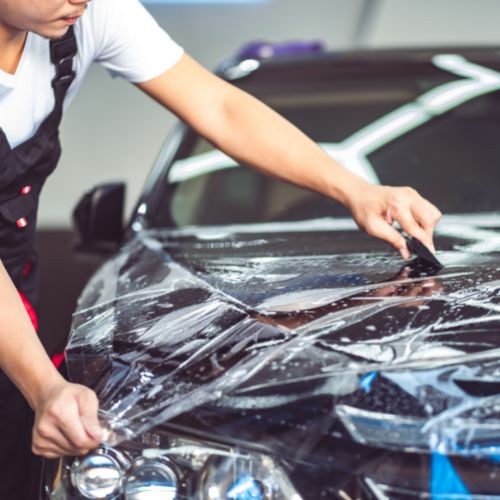 The Different Types of Auto Body Adhesives
The Different Types of Auto Body Adhesives
Working with auto body adhesives is a critical skill for anyone involved in car repair, whether you’re a seasoned professional or a DIY enthusiast. Understanding the nuances of these products is essential because the effectiveness and longevity of your auto body repairs heavily depend on choosing the best adhesive for auto body repair. If you’re new to using these specialized products, it’s vital to grasp the characteristics of the different types available. Each auto body adhesive is formulated for specific applications, and knowing which type to use will ensure optimal results when you are working on your vehicle. Let’s explore the common types of auto body adhesives used for various repairs and modifications, helping you determine what is best adhesive for auto body repair in different scenarios.
Understanding Auto Body Adhesives
Auto body adhesives are specialized compounds designed to bond vehicle components together, offering an alternative or supplement to traditional welding or mechanical fasteners. They play a crucial role in modern vehicle construction and repair, providing strength, flexibility, and corrosion resistance. The selection of the best adhesive for auto body repair depends heavily on factors like the materials being bonded (metal, plastic, fiberglass), the type of stress the bond will endure, and environmental conditions. Different adhesive chemistries offer unique properties, making some better suited for specific tasks than others.
Types of Auto Body Adhesives: Choosing the Right One for Your Repair
To effectively determine what is best adhesive for auto body repair, it’s important to understand the characteristics of the main types:
Urethane Adhesives: For Flexibility and Gap Filling
Urethane adhesives are rubber-based solutions renowned for their exceptional bonding strength and flexibility, especially when joining metal and plastic panels. A key advantage of urethane adhesives in auto body work is their ability to bridge gaps up to 1/8 inch without sagging or running. This makes them particularly useful for filling larger imperfections, holes, or cracks in a car’s body. Furthermore, urethane adhesives exhibit excellent resistance to temperature fluctuations and harsh weather conditions, making them a reliable choice for exterior and structural applications. When considering what is best adhesive for auto body repair requiring flexibility and gap-filling capabilities, urethane adhesives are often a top contender.
Polyurethane Adhesives: Moisture-Resistant Bonding
Polyurethane adhesives share many similarities with urethane but with a significant advantage: they can be applied to damp surfaces without compromising their bonding integrity or durability. This moisture tolerance is invaluable for emergency auto body repairs, especially in wet or humid environments where traditional adhesives might fail due to moisture interference. For situations where surface dryness cannot be guaranteed, polyurethane adhesives emerge as a practical solution when deciding what is best adhesive for auto body repair in challenging conditions.
Epoxy Adhesives: The Strength Solution
Epoxy adhesives are two-part systems known for their robust and durable bonds on both metal and plastic substrates. Unlike urethane adhesives, epoxies necessitate thorough mixing of the resin and hardener components before application. They also demand more precision due to their limited working time, typically around 5 minutes. However, when applied correctly, epoxy adhesives deliver superior bond strength compared to urethanes, making them ideal for structural automotive repairs that require exceptional holding power. Their excellent corrosion resistance further enhances their suitability for outdoor and underbody repairs, where rust prevention is critical. For repairs prioritizing maximum strength and resistance, epoxy adhesives are often considered what is best adhesive for auto body repair.
Acrylic Adhesives: Fast and Cosmetic Repairs
Acrylic adhesives are one-part formulations prized for their rapid setting time, usually within 15 minutes, and ease of application with minimal cleanup. Once fully cured, acrylic adhesives are paintable, making them well-suited for cosmetic repairs where a seamless finish that blends with the vehicle’s original paintwork is desired. Additionally, acrylic adhesives offer good UV protection, preventing fading or discoloration caused by prolonged sun exposure. For quick, cosmetic fixes where speed and ease of use are paramount, acrylic adhesives are often considered what is best adhesive for auto body repair for surface-level imperfections.
How to Choose the Best Adhesive for Your Auto Body Repair?
Determining what is best adhesive for auto body repair ultimately depends on the specifics of your project. Consider these factors:
- Material Compatibility: Ensure the adhesive is designed for the materials you are bonding (metal, plastic, etc.).
- Type of Repair: Structural repairs may require the strength of epoxies, while cosmetic fixes might benefit from the speed of acrylics. Gap filling needs point to urethanes.
- Environmental Conditions: Consider moisture resistance (polyurethane) and UV exposure (acrylic).
- Desired Properties: Balance strength, flexibility, and speed based on your repair needs.
By carefully evaluating these factors and understanding the properties of each adhesive type, you can confidently select what is best adhesive for auto body repair and achieve professional-quality results. Eagle National offers a comprehensive range of auto body adhesives and related accessories to meet diverse bodywork requirements. Whether you’re addressing minor dents or significant damage, choosing the right auto body adhesive is a crucial step in restoring your car to its optimal condition.

